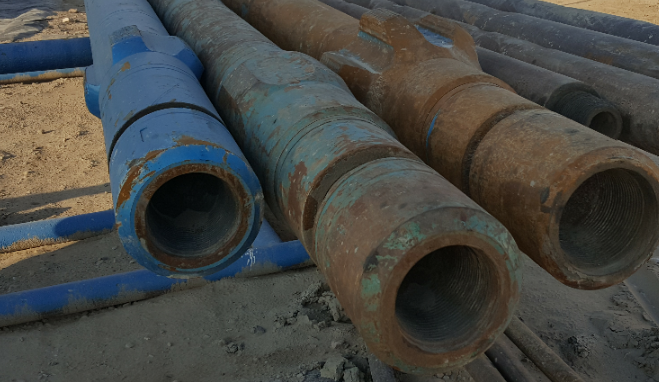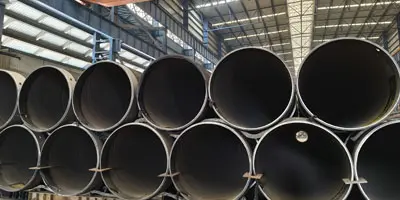In recent years, drill collar fractures have occurred frequently during oil drilling, which has attracted great attention in the industry. As an important part of the drill string, the drill collar is located at the lower part of the drill string and is connected to the drill pipe and directly connected to the drill bit. The drill collar plays an overall weighting role to prevent backlash. The inner diameter of the drill collar is smaller than the drill pipe, and its weight is larger than the drill pipe. It not only undertakes the important function of transmitting torque, but also enables the drill bit to penetrate into the formation smoothly through the stroke weight on bit. In complex and harsh environments, drill collars are subject to the dual effects of stress corrosion and alternating bending fatigue stress. These factors often lead to their failure and damage. In order to improve the safety and efficiency of oil drilling, the industry has conducted in-depth research and improvements on the manufacturing process and material properties of drill collars.

Drill collar manufacturing materials and processes
At present, the main material of drill collars is 42CrMo steel, which is a high-strength alloy steel made by arc smelting. 42CrMo steel is delivered in a hot-rolled state. It has excellent mechanical properties, high strength, toughness and good hardenability, and can withstand the complex stress environment during oil drilling. The following is the detailed manufacturing process flow:
Delivery in hot-rolled state: 42CrMo steel is delivered in hot-rolled state after arc smelting at the production plant. The steel at this stage has certain initial properties, but has not yet reached the final use requirements.
Straightening and rough machining: In the hot-rolled state, steel often has a certain degree of bending and deformation, and needs to go through a straightening process to ensure the straightness of the material. This is followed by rough machining and preliminary shaping into the desired shape of the drill collar.
Quenching and tempering treatment: Quenching and tempering treatment is an important process step to improve the mechanical properties of 42CrMo steel, including normalizing, quenching and tempering.
Normalizing: Normalizing treatment is carried out at a temperature of 860℃±10℃. The main purpose is to refine the grains, uniform the structure of the steel and improve its comprehensive mechanical properties.
Quenching: Subsequently, quenching treatment is performed in the temperature range of 790℃-800℃ to rapidly cool the steel to obtain a martensite structure and increase the hardness and strength.
Tempering: Tempering is performed at 520℃-525℃. Through moderate heating and slow cooling, the brittleness of the quenched steel is reduced and the toughness and plasticity are improved.
Straightening, stress relief and tempering: After being kept at 520°C for 6 hours, it is released from the furnace and air-cooled. Through this process, the residual stress in the steel is further released, ensuring that the material is less likely to deform and break during use.
Mechanical performance inspection and finishing: After quenching and tempering, the steel needs to undergo mechanical performance inspection to ensure that various performance indicators meet the requirements. Finishing is then carried out to ultimately form a drill collar that meets the requirements for oil drilling.
Main causes of drill collar failure
Despite the above complex process, drill collars still face severe challenges during use. In recent years, drill collar fractures have occurred frequently in oil drilling. The main reasons can be attributed to the following points:
Stress corrosion: Drill collars work in high-temperature, high-pressure, and corrosive media-rich environments. They are subject to the dual effects of corrosive media and mechanical stress for a long time, and are prone to stress corrosion cracking.
Alternating fatigue stress: The drill collar is subjected to periodic bending stress during the drilling process. Long-term alternating load causes material fatigue failure, which is one of the main factors causing drill collar fracture.
Manufacturing defects: Even under strict manufacturing process control, there may still be tiny defects or impurities inside the material. These defects will gradually expand in a high-stress environment and eventually lead to fracture.
Countermeasures and improvement directions
In response to the above problems, the industry has taken various measures to improve the reliability and service life of drill collars:
Material improvement: Develop and use higher-performance alloy materials, such as ultra-high-strength steel or new composite materials, to improve the corrosion resistance and fatigue resistance of drill collars.
Surface treatment: Through surface nitriding, coating and other technologies, the hardness and corrosion resistance of the drill collar surface are enhanced to slow down the occurrence of stress corrosion cracking.
Optimization process: further optimize the heat treatment process, refine the grain structure, uniformize the organization, and improve the comprehensive mechanical properties of the material. At the same time, strengthen alignment and stress relief treatments to reduce residual stress levels.
Non-destructive testing: Introduce advanced non-destructive testing technology, such as ultrasonic testing, X-ray testing, etc., into the production process to promptly discover and eliminate internal defects in materials to ensure product quality.
On-site monitoring: During the drilling process, advanced sensors and monitoring equipment are used to monitor the stress and working status of the drill collar in real time, detect abnormal situations in a timely manner, and take preventive measures.
Conclusion
As an important means of energy extraction, oil drilling's safety and efficiency are directly related to national energy security and economic development. As an important part of the drill string, the reliability and performance of drill collars are crucial. Through continuous technological improvements and material upgrades, the problem of drill collar fractures in oil drilling will be effectively controlled, thereby improving the safety and efficiency of drilling operations. In the future, with the advancement of science and technology and the application of new materials, it is believed that the oil drilling industry will usher in more stable and efficient development.






 English
English Español
Español بالعربية
بالعربية











 Phone :
Phone :  Whatsapp :
Whatsapp :  Email :
Email : 


